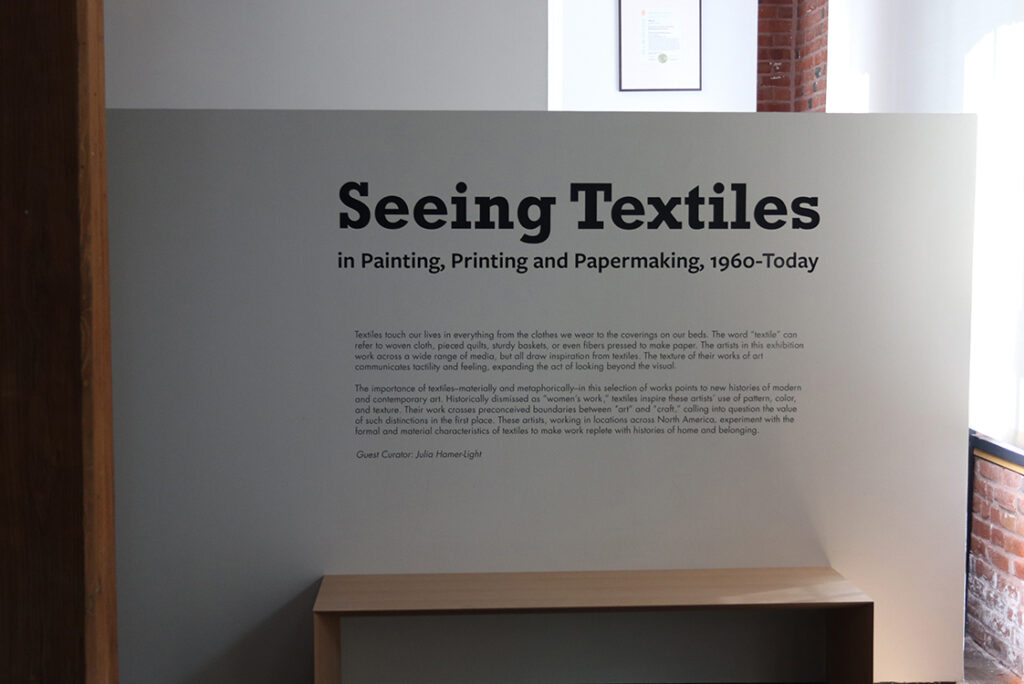
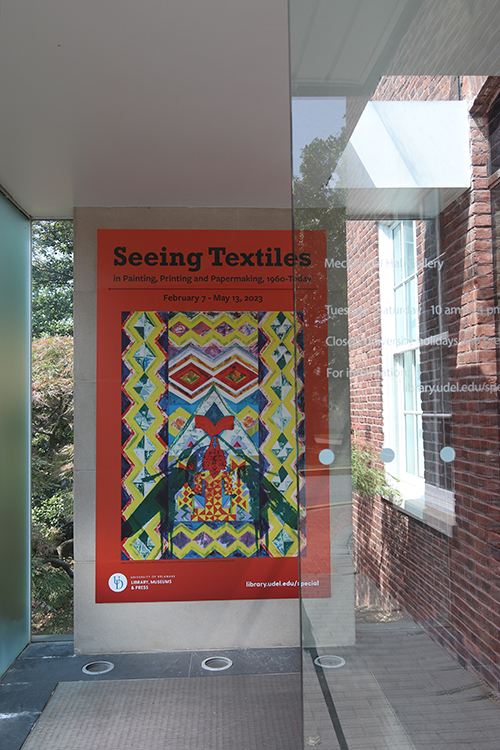
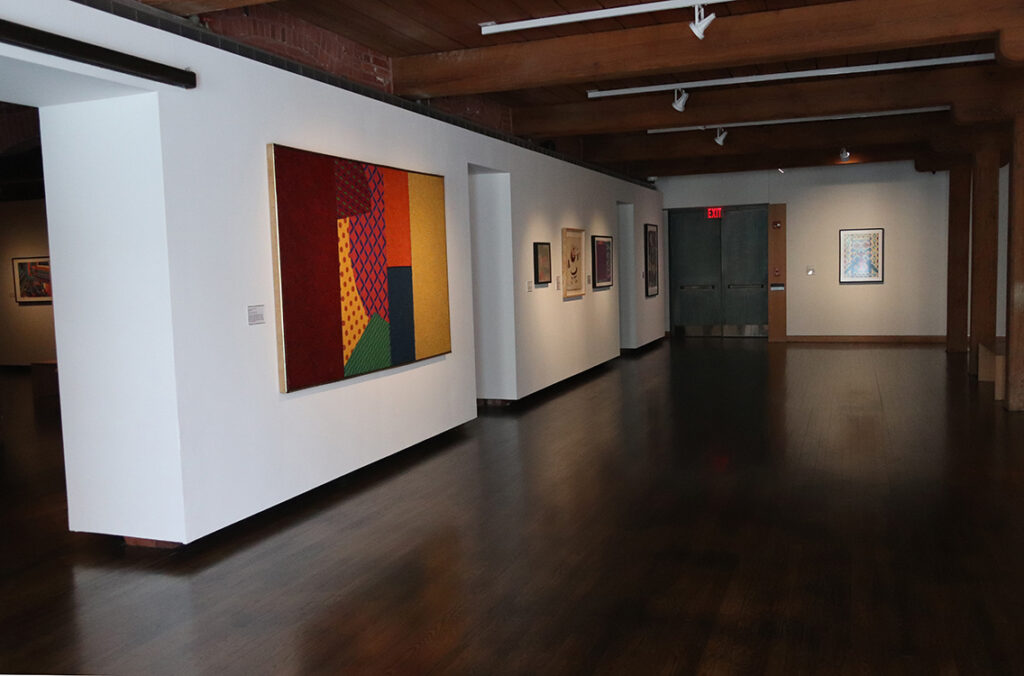
Textiles touch our lives in everything from the clothes we wear to the coverings on our beds. The word “textile” can refer to woven cloth, pieced quilts, sturdy baskets, or even fibers pressed to make paper. The artists in this exhibition work across a wide range of media, but all draw inspiration from textiles. The texture of their works of art communicates tactility and feeling, expanding the act of looking beyond the visual.
The importance of textiles–materially and metaphorically–in this selection of works points to new histories of modern and contemporary art. Historically dismissed as “women’s work,” textiles inspire these artists’ use of pattern, color, and texture. Their work crosses preconceived boundaries between “art” and “craft,” calling into question the value of such distinctions in the first place. These artists, working in locations across North America, experiment with the formal and material characteristics of textiles to make work replete with histories of home and belonging.
Guest Curator: Julia Hamer-Light
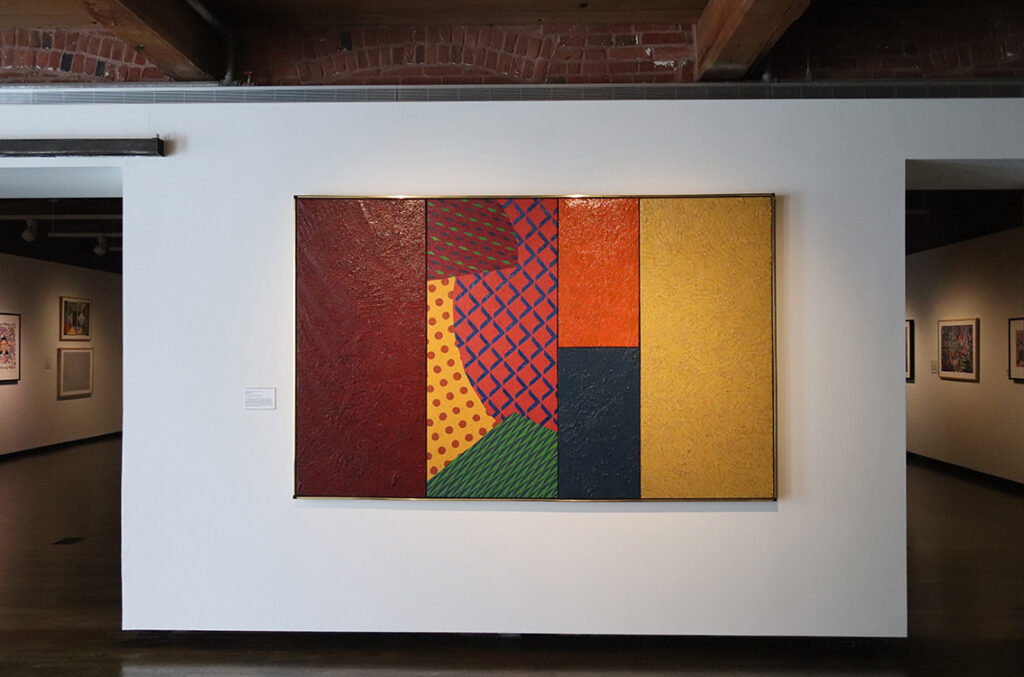
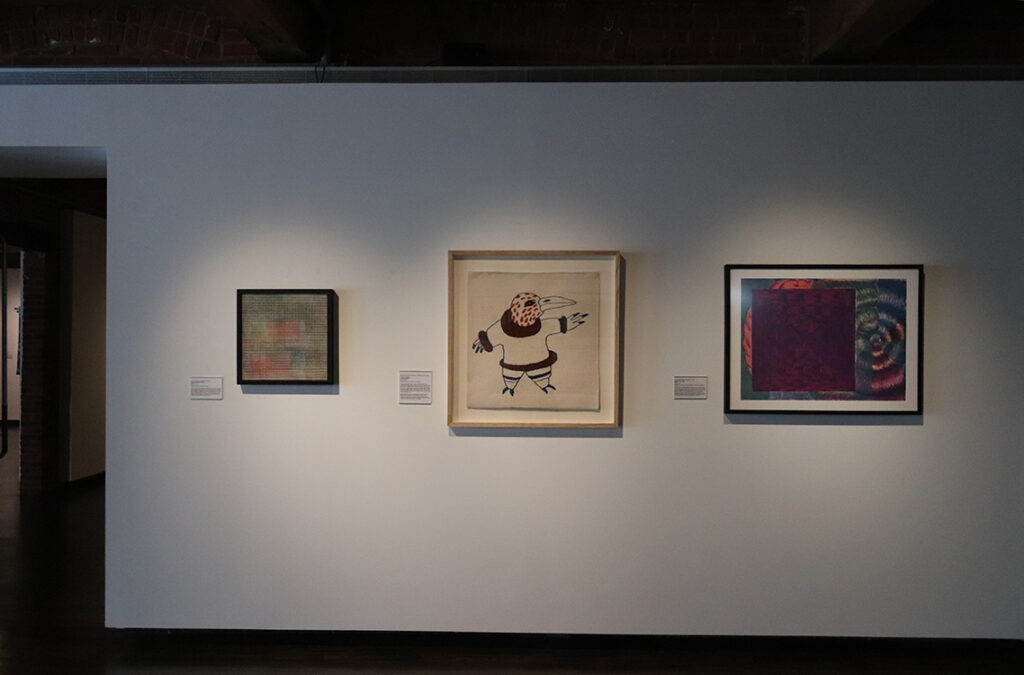
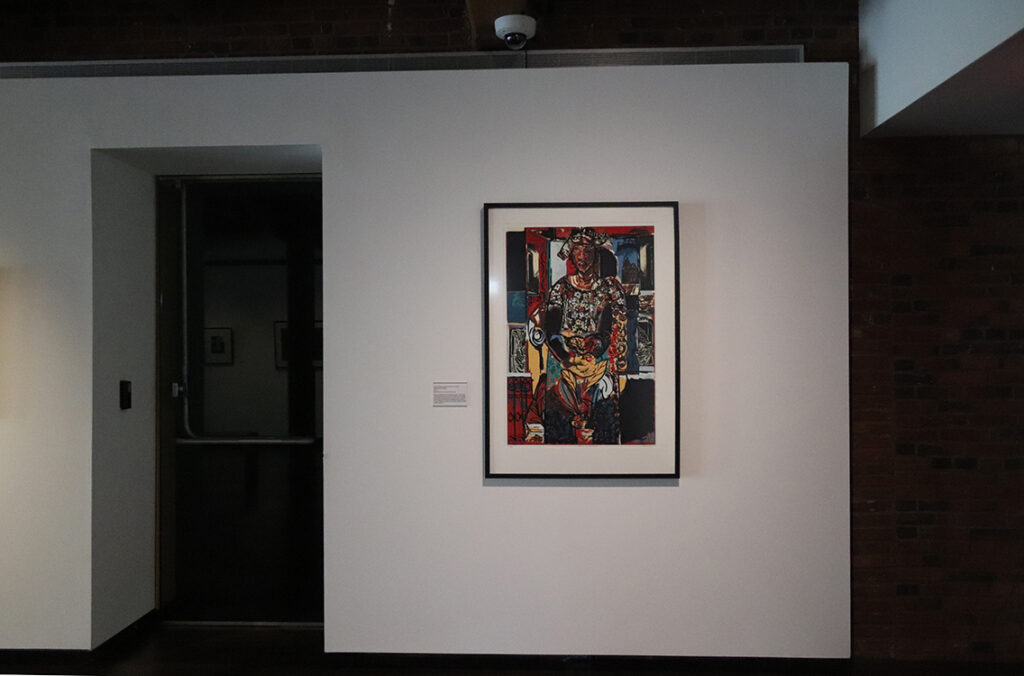
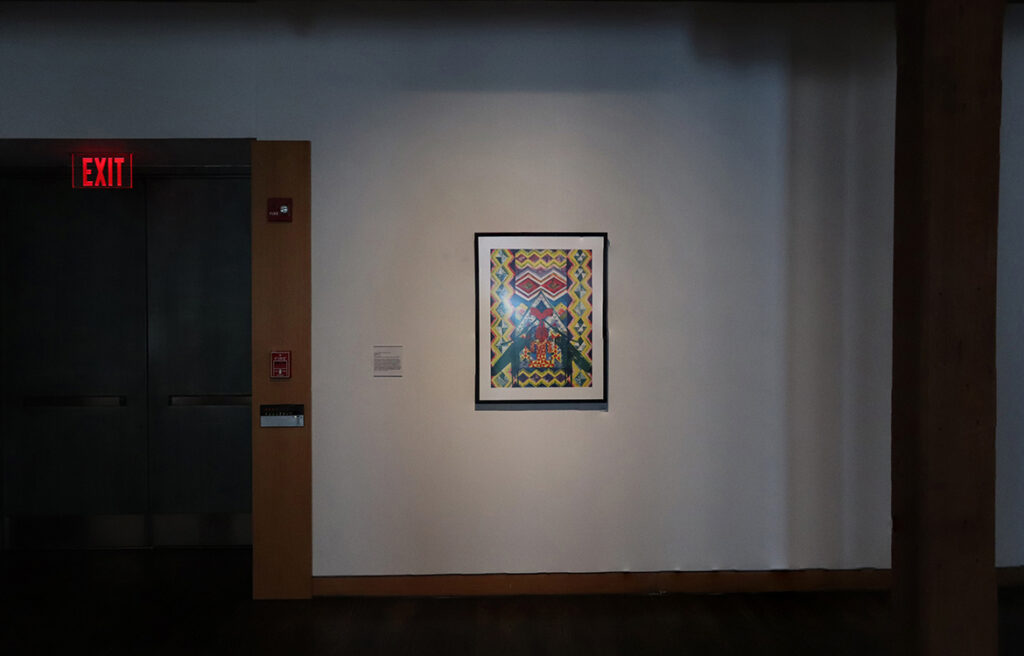
1.
James Little (United States, b. 1952)
Countdown
1981
Oil paint, cotton scrim netting, canvas
Museums Collections, Gift of Paul R. Jones
James Little is just as interested in the process of painting as he is in the finished product. He grinds pigment and mixes his own paint carefully to orchestrate how colors push and pull against one another, balancing in harmony. The diamonds, polka dots, and lattices of the center left panel seem lifted from upholstery or clothing. The structure of woven textiles inspired many of Little’s early works. The gridded mesh he embedded beneath the painting’s surface even evokes a woven texture.
2.
Jack Whitten (United States, 1939-2018)
Annunciation XVIII
1979
Acrylic on canvas
Museums Collections, Gift of Paul R. Jones
Auras of color bloom through the straight lines of the grid and make the painting vibrate with energy. As an abstract artist, Jack Whitten uses the pattern of a grid to call attention to the painting as a spatial plane. Whitten’s translucent lines soften the rigid pattern. The evenly spaced, overlapping lines resemble a woven surface. Where some painters and printmakers borrow patterns from textiles, others like Whitten draw inspiration from their structure.
3.
Malaya Akulukjuk (Nunavut, 1915-1995) and Olootaa Veevee (Nunavut)
Dancing Bird
Late 20th century
Wool, linen
Museums Collections, Gift of Carol A. Heppenstall
The green-eyed bird dances to music only he can hear. This weaving is composed of thick, fluffy yarn. The warp, or yarn strung up and down, would have been tied to a stationary frame or loom. The weaver strung the weft, or yarn that runs side to side, through the warp to make the fabric. These warp and weft threads compose the structure of this tapestry. The other two works on the wall, one a print and another a painting, take inspiration from the woven grid in textiles like this one.
Malaya Akulukjuk (Inuk) drew the dancing bird while Olootaa Veevee (Inuk), a member of the Pangnirtung Weave Shop, translated her drawing into tapestry. When artists work across media, they collaborate to share their expertise. The body and bulk of the wool makes the bird appear almost alive.
4.
David Stephens (United States, b. 1942)
Eight Four (B)
1980
Silkscreen
Museums Collections, Gift of the Brandywine Workshop, Philadelphia, PA
Colorful strands coil and weave in this silkscreen by David Stephens. The patterns were inspired by the weaving of fibers of grass, wood, or other material in a basket. The artwork becomes more impressive when you realize that, to make a screen print, the artist has to apply each color in a separate layer. Stephens has represented the interwoven pattern with at least three pigments. The print shows how artists translate patterns and forms between media like textiles and screenprinting to challenge themselves technically.
5.
James Phillips (United States, b. 1945)
Untitled II
1994
Offset lithograph
Museums Collections, Gift of the Brandywine Workshop, Philadelphia, PA
Angular bolts of color zig and zag around the border of James Phillips’s lithograph. Phillips draws inspiration from the aesthetics and metaphysics, or meaning, of the patterns and colors of west African kente cloth, a fabric originally produced for royalty. Weavers of kente cloth use strip looms to produce narrow bands of cloth before joining them together by hand. The geometric patterns that inspired Phillips are produced by alternating different colored thread in the warp and weft of the loom. A member of the African Commune of Bad Relevant Artists (AfriCOBRA) and the Weusi Artist Collective, Phillips connects to the creative traditions of the African diaspora through his flat aesthetic characterized by bold outlines, blocks of color, and flat perspective.
6.
David Stephens (United States, b. 1942)
Eight Four (B)
1980
Silkscreen
Museums Collections, Gift of the Brandywine Workshop, Philadelphia, PA
Colorful strands coil and weave in this silkscreen by David Stephens. The patterns were inspired by the weaving of fibers of grass, wood, or other material in a basket. The artwork becomes more impressive when you realize that, to make a screen print, the artist has to apply each color in a separate layer. Stephens has represented the interwoven pattern with at least three pigments. The print shows how artists translate patterns and forms between media like textiles and screenprinting to challenge themselves technically.

